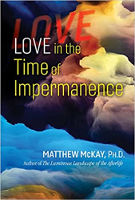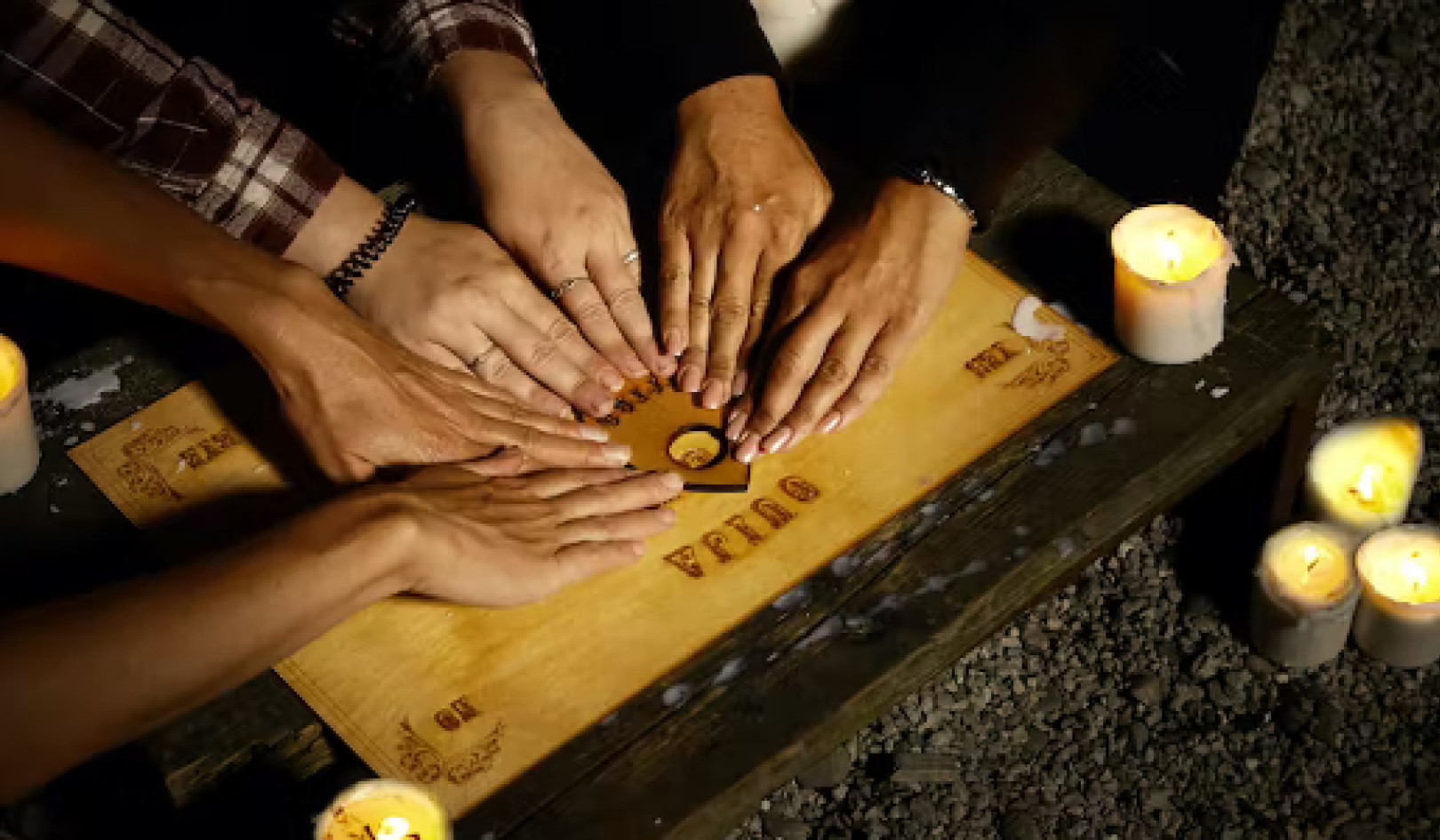
Image by Sophie Janotta
All significant choices move us toward or away from love. And the most important thing we learn in life is recognizing the choices and actions that bring us closer or farther from love. Each day is full of moments where such choices take place. These moments are often invisible: we respond automatically, as the choice is out of our awareness. Making these choices conscious—to act on love or not—can be life-changing.
While love is eternal, permanent, the only way to experience that is to turn love into action. Acting on love opens you to Spirit, quiets doubt, and helps you glimpse the connection and belonging that is the birthright of every soul.
Moments of Choice as Opportunities
1. Every human interaction requires decisions about what to say, how to act, your demeanor, and the feelings you convey about the other. All throughout the day you are encountering people, and each of these moments can be an opportunity to act with love.
You see in the examples below that even small expressions of interest or acknowledgment—even to people we don’t know—are love. They are choices in a moment of time that express caring and convey awareness that this other person has a life that matters. What they feel matters; their hopes matter; their struggles and pain matter. Sometimes with a single gesture or a few words you can convey all of this. And that is love.
-
Before rushing back to the highway, smiling, making eye contact, and wishing the toll-taker a good day is an act of love.
-
Prior to checking out, sincerely thanking a salesperson for their help is love.
-
Instead of passing by silently, touching your partner’s shoulder as you walk into a room is love.
-
Rather than expressing opinions and judgement, asking your son to tell you about his day, then sitting and listening with interest is an act of love.
-
At the end of an exhausting day, reading your daughter a bedtime story is love.
-
Fighting back anger in order to appreciate the circumstances that made someone late is love.
-
Rather than ignoring them, checking in with a coworker who looks distressed is an act of love.
-
Looking glad to see someone is love.
-
Responding to a partner’s complaint with interest and curiosity—rather than a counterattack—is love.
-
A volunteer who maintains trails in a much loved regional park acts with love.
2. Everything you do that affects others—now or in the future—can be done with or without love. Usually this means doing a task or a job in such a way that others benefit. Their lives or their environments, even in a small way, are made better. A common theme of the following examples is that someone, usually not present when the work or task is done, is cared for through the effort. And that the task is done consciously, with service to that person in mind. Consider that:
-
The tile layer who works with precision and careful design is giving love in the form of beauty. Everyone who enters that room receives the gift.
-
The cop who remains watchful, protecting the vulnerable and victims of harm, is acting on love during every moment of his or her vigilance.
-
The gardener who works to make even the smallest patch of lawn or flower bed provide comfort and beauty is giving love.
-
A father who makes a kite for a child—colorful and designed to fly well—is acting with love.
-
A janitor who thinks of those who will use a bathroom, making it fresh and sanitary, is giving love.
-
A flight attendant who is watchful for the needs of each passenger is giving love.
-
A mother who makes a tasty and nutritious lunch for her child is giving love.
-
A school kid who writes an essay that expresses something real or honest is giving love.
-
A warehouseman who loads a truck carefully so no one is hurt and nothing is damaged is acting with love.
-
A volunteer who maintains trails in a much loved regional park acts with love.
3. Whenever you’re with someone or something you love, you face a choice—to enact love at that particular moment or not. All interpersonal behavior expresses a valence of attachment from embracing to rejecting. This is not an issue of politeness or socially acceptable behavior. A message is very directly sent by gesture, language, tone and, of course, our actual behavior. So at every moment, in every important relationship, your behavior expresses the present quality of connection.
-
Slouching and looking away during a conversation conveys disinterest and is somewhere south of neutral on the continuum of embracing or rejecting.
-
Smiling, nodding, touching, or a focused look of concern all push the needle toward an embrace.
-
Validating, expressing authentic concern, and asking questions in a tone of interest rather than judgment all express love.
-
Blaming, judging, turning away, inflicting silence, all convey rejection.
Making Conscious Choices
Literally everything we do—consciously or otherwise—tells those we care for whether or not they are loved. And these moments string together into a chain of events that define the relationship, that literally create love or its opposite. What you create can be a conscious choice.
Your relationship to your pets and virtually any sentient being works the same way. How you respond when your dog nuzzles you to be petted sends love, indifference, or rejection. And these moments sew together a relationship marked by these same aspects.
There is no escaping this truth: when in the presence of those you care for, everything you do (or don’t do) sends a message that shades and colors that time. It becomes forever a time of connection and care, or it becomes something else. So often, without thinking or consciously choosing, we turn moments with loved ones into indifference or even rejection. And those moments remain that way forever. The opportunity to love was lost.
Morning Meditation
The following brief meditation, used each morning, will set your course for the day:
Focus on your diaphragm, the center of breath and of life. Count each out-breath to ten, then repeat for a second round of ten breaths. Be aware of the day ahead, both its opportunities and challenges. Now repeat to yourself this mantra: Today at every moment of choice, I am love. Say that slowly, for a minute or two.
You don’t have to plan how you’ll respond to each challenge. All that’s needed is the intention.
Every moment you are creating yourself. Your life is being shaped. You are creating your relationships; you are shaping them to serve your desires or be containers for love. The meditation above can set your intention for the moment, the day, and with repetition, the course of your entire life.
Wisdom is always connected to action. Knowing leads to doing. Seeing the right path leads to taking the right path.
Moments of Choice as Dangers
There are three danger points—also moments of choice—that we must be conscious of to keep enacting love. They are moments when there is strong emotion, moments when there is pain, and moments when we experience strong desires or impulses.
Strong Emotion
Surging emotions almost always suggest the presence of a choice—to act on love versus emotion-driven urges. For example, sadness makes us want to withdraw, anger presses us to attack, and anxiety drives us to avoid, while shame makes us want to hide or attack. But these emotion-fueled urges are rarely aligned with love. They usually drive us to disconnect from others, to wall ourselves off in a world of distress where our primary goal is to protect ourselves at the expense of love and relationship.
Noticing when strong emotions arise is critical to acting on love. If we don’t pay attention to surging emotions, we act on autopilot—we are driven to cope and avoid. The intention to love is lost in the compulsion to soothe the emotion—at whatever cost.
Pain
When you are in emotional, mental, or physical pain, choice is usually present, but you may not know it. Pain creates intense urgency to numb or fix or diminish the experience of pain. But these efforts to manage pain often shove us away from love. We numb with drugs, alcohol, or distracting activities and forget about connection. We focus on whatever offers relief while those we love slip down the ladder of what’s important to us. Our daily choices are about escaping rather than embracing. As with strong emotions, the intention to love can get lost.
Desires and Impulses
Strong desires usually indicate that a choice is present—whether you see it or not. Desire can motivate you to seek positive experiences or, on the other hand, blindly stride toward something destructive. Sexual desire can, for instance, push you toward bonding, care, and partnership. Or toward exploitation. The desire for any pleasure—from food to entertainment to buying things—is often a moment of choice that can bring you closer or farther from love. All strong impulses, particularly those involving leaving or withdrawing (relationships, jobs, places, and so on) can impact love.
Desires and impulses turn the focus toward ourselves and away from others. They cloud our intentions to love and push us into unconscious, automatic behavior. Choice can be lost; love becomes an abstract idea without roots in our actual behavior.
To summarize, strong emotions, pain, and desires are danger zones. They create situationswhere we make unconscious choices and react without awareness of the consequences for love. These moments, over time, can define our lives and mark our path. In combination, they can deflect us from our mission here: learning to love.
Planning Love
Since love is action—something we do rather than something we believe or feel—we can plan for it. In the same way you map out your day, planning for all the events and tasks, you can plan to act with love. Love is something we do with our hands, with the expression on our face, and with the words formed by our lips. It’s behavior: like picking your socks off the floor, like a caress, like nodding or smiling, like any small act of kindness or generosity. Love is listening and repeating back to see if you understood what was heard.
These brief moments aren’t big. But they add up to something big: a relationship made of love.
Planning to love starts with intention, the commitment to see where love is possible throughout the day. It’s certain that you’ll miss a lot of these moments because you aren’t paying attention or are distracted by something compelling. That’s OK. It’s the nature of our often frantic lives. But by making a daily intention to love, we open ourselves to noticing more moments of choice, more moments of clarity where the road forks in front of us—toward love or disconnection.
The intention to act on love is not always successful. The message may not be received. But this isn’t failure or a reason to give up.
The intention to love is the most important thing. Then you find out whether it works or not. You learn. If it doesn’t work, if there are unintended consequences, you have gained wisdom, and the same intention will later lead to different actions and better outcomes.
Those are the two key things: intentions guided by love, and paying attention and learning from outcomes. One without the other may not work.
Morning Intentions
The morning intention is a ritual to prepare yourself to recognize opportunities to love. Select a time each morning to do the following:
-
Take and release several deep breaths. In this moment of calm make a commitment to yourself to notice moments of choice during the day where you can move toward or away from love.
-
Formally set the intention to act on love this day.
-
Scan ahead to identify encounters and events (with colleagues, family, friends, even strangers) that might offer a chance to respond with love. What might you do or say, how would you convey this intention? See if you can plan three or four intentional acts of love in these moments of choice.
- Briefly meditate on how you experience love by bringing someone to mind whom you love deeply. Notice the flame of this love inside you, even if it’s only a brief spark of awareness. Let this moment of love begin your day and inspire choices you make till the day’s end.
Awareness of Present States and the Morning Intention
We explored the three danger zones that can hijack love: strong emotion, pain, and desire. You can begin each morning with a commitment to observe one of these states when it occurs that day. You might think to yourself: Today I’m watching my (emotions, pain, or desires). That’s my job, to see the choice each time: emotion-, pain-, or desire-driven behaviors—or love.
During the first week, rotate your morning intention across these three states. Develop the ability to recognize each and see that choice exists before being swept into automatic responses. After the first week, shift your intention to mindfully observe all three states when they arise: high emotion when it’s triggered, pain when it occurs, desire as it drives you toward some impulsive act. As soon as the emotion becomes recognizable, as soon as the pain—in any form—shows up, as soon as desire hits you, commit yourself to see it and be aware that this is your moment of choice.
Our journey here, and the aloneness our spirits feel in this place, is a necessity for the evolution of love. The trajectory of consciousness on Earth is moving from selfishness (protecting and preserving the life of the individual) to community to oneness. All fueled by intentional love.
Copyright 2022. All Rights Reserved.
Reprinted with permission of the publisher,
Park Street Press, an imprint of Inner Traditions Intl.
Article Source:
BOOK: Love in the Time of Impermanence
Love in the Time of Impermanence
by Matthew McKay
 We live in a world where nothing lasts. Everything we love--the relationships, places, and things we most count on, even our own bodies--will change or be lost. But, as psychologist Matthew McKay shows, the certainty of change and loss can actually support rather than diminish love. For at the heart of pain and loss is love.
We live in a world where nothing lasts. Everything we love--the relationships, places, and things we most count on, even our own bodies--will change or be lost. But, as psychologist Matthew McKay shows, the certainty of change and loss can actually support rather than diminish love. For at the heart of pain and loss is love.
Ultimately, Matthew McKay shows that, by running from pain, we run from love. By avoiding pain, we lose the pathway to connection. Yet, by recognizing love in the heart of pain and loss, by knowing that change and impermanence are inevitable, we can navigate life with a compass pointing to love as true north, learning to love more deeply and making what we love more cherished.
For more info and/or to order this book, click here.xxx Also available as a Kindle edition.
About the Author
 Matthew McKay, Ph.D., is a clinical psychologist, professor of psychology at the Wright Institute, cofounder of Haight Ashbury Psychological Services, founder of the Berkeley CBT Clinic, and cofounder of the Bay Area Trauma Recovery Clinic, which serves low-income clients. He has authored and coauthored more than 40 books, including The Relaxation and Stress Reduction Workbook and Seeking Jordan. Matthew is the publisher of New Harbinger Publications.
Matthew McKay, Ph.D., is a clinical psychologist, professor of psychology at the Wright Institute, cofounder of Haight Ashbury Psychological Services, founder of the Berkeley CBT Clinic, and cofounder of the Bay Area Trauma Recovery Clinic, which serves low-income clients. He has authored and coauthored more than 40 books, including The Relaxation and Stress Reduction Workbook and Seeking Jordan. Matthew is the publisher of New Harbinger Publications.
More books by Matthew McKay.




























